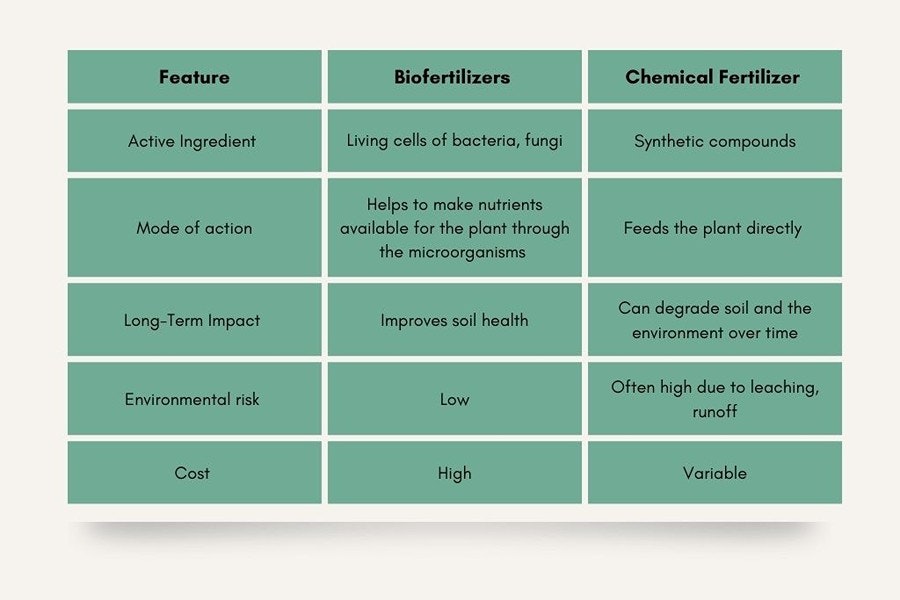What Are Biofertilizers? benefits, types, and real-world agricultural results
Discover what biofertilizers are, how they work, and how farmers are using them to reduce chemical inputs and improve soil health plus real-world case studies.
Last updated:
12 May 2025
Tags:
##concepts
Lina Avila Henao
Founder & Lead Consultant
If you’ve been hearing more about biofertilizers recently but still aren’t sure what they actually are, how they work or how they compare to the synthetic products that you’ve always used then this post is for you!
Currently many of the producers, agronomists and people from the agricultural industry are exploring ways to reduce chemical applications, lower the costs, make a more conscious use of the resources and work more towards soil health.
Then this leads to the question: what exactly should we use that can take us there?
Let’s break it down simply — no lab coat required.
Biofertilizers
Biofertilizers are products that contain living microorganisms—such as bacteria, fungi, actinobacteria, or algae—as their main ingredient. These microorganisms help plants grow by improving access to essential nutrients like nitrogen, phosphorus, and potassium.
These products are formulated in laboratories and tested on plants for specific benefits. For example, microorganisms can form associations with plant roots to fix nitrogen, solubilize phosphorus, enhance plant growth, improve soil structure, and increase plant tolerance to stress or disease. Thanks to all these roles, these microbes are often called Plant Growth-Promoting Microorganisms (PGPMs) — a term you’ll see often in both research and practical agriculture.
Biofertilizers do not leave residual effects on the soil, making them less harmful to the environment than synthetic fertilizers and contributing to more sustainable, eco-friendly agriculture.
Biofertilizers vs. Chemical Fertilizers

Types of Biofertilizers you might hear about
Nitrogen-fixing: Microorganisms like Azotobacter, Azospirillum, Rhizobium, capture nitrogen from the atmosphere and make it available to plants.
Phosphate-solubilizing: Other organisms like Bacillus, Pseudomonas unlock phosphorus that’s “locked” in the soil.
Potassium-solubilizing, Zinc-solubilizing, and Mycorrhizal fungi: Support uptake of other key nutrients.
These microbes can be applied as seed coatings, soil treatments, or foliar sprays, and are commonly used as part of sustainable farming practices.
Why are more farmers using them?
Growers around the world are under pressure: rising fertilizer costs, tighter regulations for chemicals, and the growing need to produce more with less impact on the environment.
Growers around the world are under pressure: rising fertilizer costs, tighter regulations on chemicals, and the growing need to produce more with less environmental impact, which is why biofertilizers are becoming a preferred choice among farmers seeking practical and eco-friendly solutions. Some of the major benefits:
Reduction of dependence on synthetic inputs
Help to develop more resilient crops, able to tolerate drought and salinity
Real world case studies
The first case study is from Brazil, a country that stands out for its advanced research in biofertilizers. Brazil has also been a pioneer in exploring symbiotic nitrogen associations and improving crop efficiency. Brazil has extensively utilized Bradyrhizobium strains to promote biological nitrogen fixation (BNF) in soybean crops. Research indicates that soybean's nitrogen demand can be fulfilled by BNF, with inoculation resulting in grain yield gains of 4–5% in Brazil. This approach has allowed soybean plantations to be completely supplied with nitrogen through rhizobia, eliminating the need for synthetic nitrogen fertilizers.
The other case study is also in Brazil but with another microorganism, Azospirillum brasilense. Farmers have seen impressive results using Azospirillum brasilense (strains Ab-V5 and Ab-V6) to inoculate maize seeds. Field trials report yield increases of up to 30% compared to untreated crops. On top of that, the use of these biofertilizers allowed a reduction in synthetic nitrogen fertilizer application, promoting more sustainable farming practices.
In Colombia, researchers tested a biofertilizer based on a nitrogen-fixing bacteria called Azotobacter chroococcum on cotton crops — and the results were promising. By using this biofertilizer, they were able to cut synthetic nitrogen fertilizer in half (50%) without reducing the plant’s growth or health. The treated cotton plants developed more biomass and took up nutrients more efficiently. Proving that biofertilizers can support crop performance and reduce dependency on chemicals.
In Mexico, research evaluated the impact of biofertilizers in combination with synthetic fertilizers on maize and wheat yields across various states. The findings indicated that applying biofertilizers alongside synthetic fertilizers led to increased maize yields, suggesting that biofertilizers can effectively supplement or even reduce the need for chemical fertilizers in certain conditions.
Should I try Biofertilizers?
If you’re new to the concept, my advice is simple:
Evaluate your current crop status — understand your soil, yield goals, and any stress factors before introducing a new input.
Start small — apply the biofertilizer to a trial plot or a specific section of your field.
Track results — monitor yield, plant health, and input costs to assess effectiveness.
Ask questions — every crop and region is different. Make sure the product you’re using fits your specific conditions and goals.
Wrapping up
The growing use of microorganisms in agriculture is not just a scientific trend — it's a response to the real needs of farmers who want healthier soils, more resilient crops, and lower input costs. Studies from around the world continue to show that biofertilizers and microbial inputs can maintain or even improve yields, all while reducing the need for synthetic fertilizers.
Every crop, region, and soil presents unique characteristics, which means that there's no one-size-fits-all solution in agriculture. What works in one area may not be effective in another, making ongoing research essential. Despite these variations, the potential of biofertilizers to contribute to more sustainable and efficient farming systems is undeniable.
Lina Avila Henao
Founder & Lead Consultant